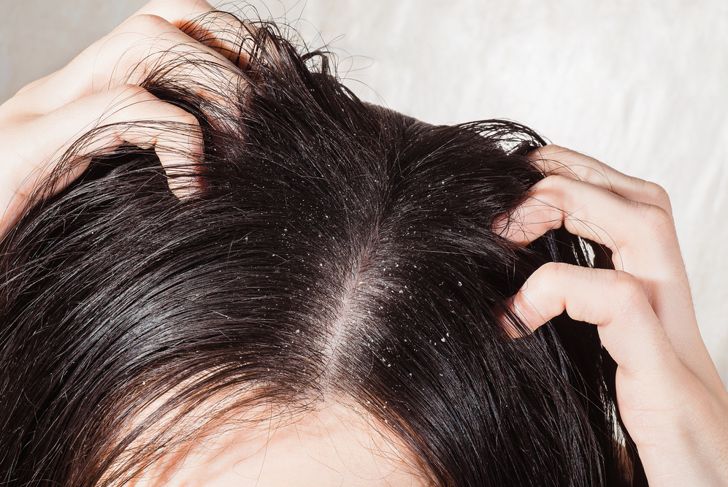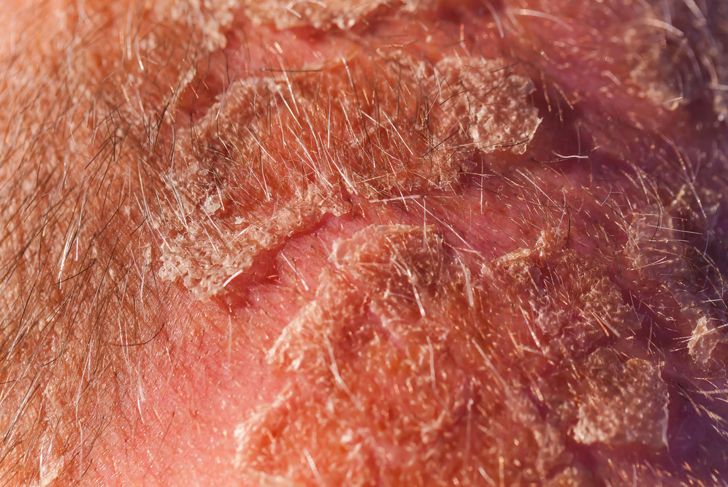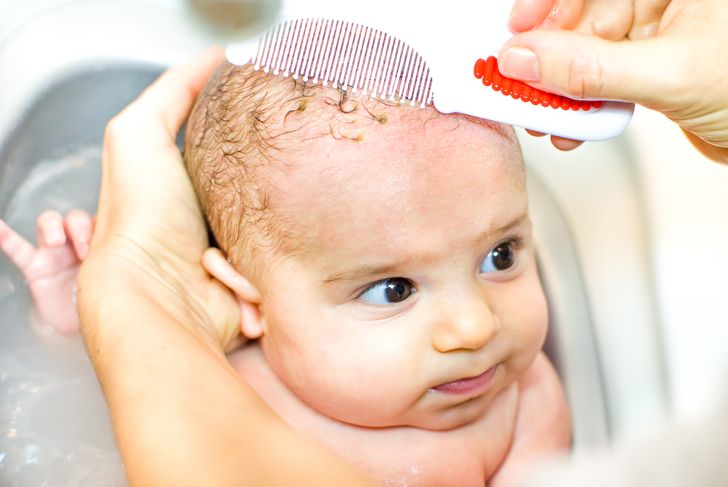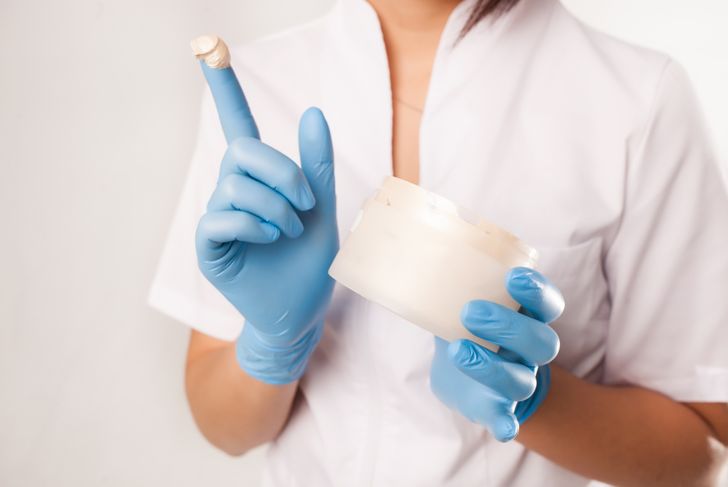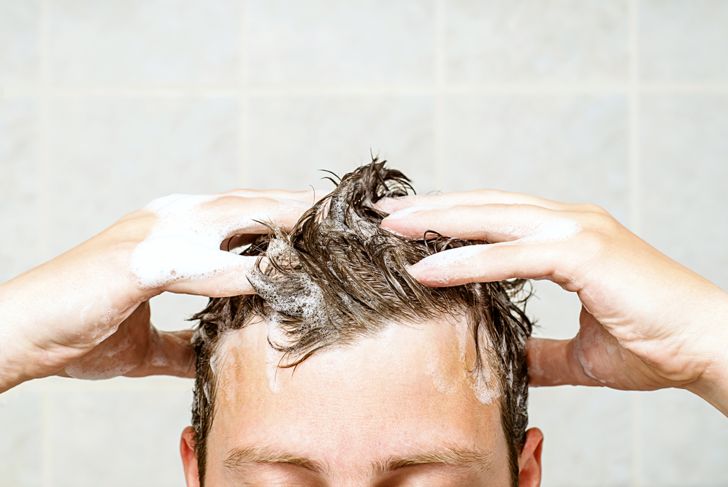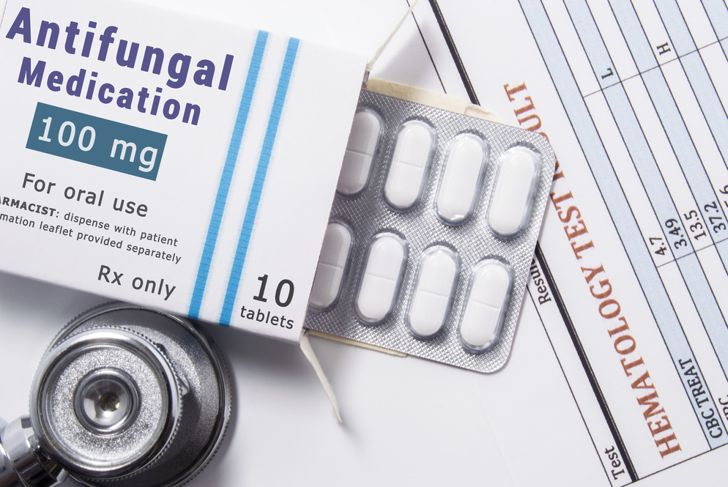Seborrheic dermatitis is a skin condition that creates an itchy, red rash. Also known as seborrheic eczema or seborrheic psoriasis, it mainly affects the scalp. Cradle cap is medically known as infantile seborrheic dermatitis whereas dandruff is another common term for its symptoms. The skin condition can also appear in other oily places such as the chest, back, and parts of the face. A link between the heavy production of sebum and skin yeast in these areas might be the cause of the symptoms. Babies, elderly, and everyone in between can experience seborrheic dermatitis. For some people, reoccurring treatments are necessary.
Dry Skin Flakes
One of the most obvious signs of seborrheic dermatitis is dry skin flakes. If you notice tiny, white specs on your scalp or in your hair then you might have this skin condition. Dry skin flakes might also appear on your eyebrows or facial hair if you have any. Dandruff is a symptom of seborrheic dermatitis, but it might also be caused by not washing your hair too little or too often. Other skin ailments such as psoriasis, eczema, or simply dry skin can cause flaking dandruff, too.
Yellow, Greasy Scales
Often, seborrheic dermatitis is associated with greasy scales because of the heavy sebum production. For a baby, this condition is commonly referred to as cradle cap. Your infant may have crusty or oily patches along with white or yellow scales. This same type of crusting can also appear on parts of the face including the eyebrows, eyelids, nose, or ears. The armpits, chest, and groin areas may also become infected with seborrheic dermatitis in older people.
Peeling and Burning
Although dandruff involves a flaky, dry skin, seborrheic dermatitis can also cause peeling. Similar to a skin burn, the affected parts may be able to peel right off. However, this can also cause a painful burning sensation depending on the severity of the skin condition. The signs of seborrheic dermatitis may flare up if you become more stressed. Cold, dry weather conditions can also trigger the symptoms.
Red, Itchy Patches
If you didn’t scratch your itchy scalp, you might not have noticed all the other symptoms of seborrheic dermatitis. Now you suddenly have dandruff or peeling scales. Although it temporarily relieves the itching sensation, scratching your scalp or skin will only make the symptoms worse.
Treatment: Shampoos and Washing Methods
Try washing your hair with over-the-counter dandruff shampoos. There are several different active ingredients to choose from so you might have to do a little trial and error. There are shampoos that contain pyrithione zinc, salicylic acid, or selenium sulfide as their main medical ingredient. Clean your scalp every day until the symptoms of seborrheic dermatitis subside. After that, wash your hair regularly from one to three times a week. Be sure to follow the directions and leave it in for the recommended amount of time. If it works for a while but becomes less effective, try another shampoo. If you have facial hair, you should wash your beard with a shampoo containing one percent ketoconazole daily. After the symptoms are gone, you should continue to shampoo it once a week unless you want to shave altogether. For babies, wash the cradle cap using a non-medicated shampoo once a day. Before rinsing out the shampoo, loosen the greasy scales with a soft-bristled brush.
Treatment: Creams and Ointments
Remember that ketoconazole shampoo used on facial hair? Well, that same ingredient is used in antifungal creams, too. A corticosteroid cream can also help soothe the symptoms but keep any creams away from your eyes. You can also get medicated creams which have calcineurin inhibitors like tacrolimus and pimecrolimus, respectively. These seborrheic dermatitis treatments might give you fewer side effects than corticosteroid creams but are more expensive. They are also frowned upon by the Food and Drug Administration (FDA) because of concerns with possible links to cancer.
Treatment: Alternative Medicine
If you want to try a lighter, alternative medication to treat dandruff or cradle cap, you should opt for oils. Although the evidence does not back the research, you might find these treatments to be the easiest way to manage seborrheic dermatitis. You can use mineral oil, olive oil, coconut oil, or tea tree oil in the affected area. You can let it soak on your scalp or skin before shampooing, before rinsing, or on its own. Aloe vera gel and fish oil supplements can also help with symptoms of seborrheic dermatitis.
Treatment: Lifestyle Changes
You should avoid using hair products while treating seborrheic dermatitis on your scalp. You can use hairspray or gel if the burning, peeling, and itching symptoms are not present. However, if you notice your symptoms flaring up, they will make the condition worse. Hair or skin products with alcohol can also cause more problems. Speaking of skin, sometimes seborrheic dermatitis affects the chest and other parts of the body. Wearing cotton with smooth textures can help reduce skin irritations. Washing your body regularly with sensitive soaps can help. Be sure to rinse away any excess soap and moisture your skin. If your eyelids are affected by the skin condition, then rinse them gently with baby shampoo before wiping away the loose skin with a cotton ball.
Treatment: Visit a Doctor
After your doctor diagnoses seborrheic dermatitis, he or she may recommend you try at-home remedies like the ones already listed. If those do not work, other treatments are available such as prescription-strength medications. Corticosteroids can be applied directly to the affected area and work effectively but must be used sparingly to avoid side effects such as thinning of the skin. You should also visit your doctor if you think the skin condition is infected with a secondary rash or you feel overwhelmingly anxious or embarrassed by seborrheic dermatitis. It should not distract you from completing daily tasks nor cause you to lose sleep at night.
Treatment: Antifungal Products and Medications
Your doctor might also suggest stronger antifungal medications depending on the severity of your symptoms. There are two medications available but these are not go-to treatments because of drug interactions and side effects.

 Home
Home Health
Health Diet & Nutrition
Diet & Nutrition Living Well
Living Well More
More